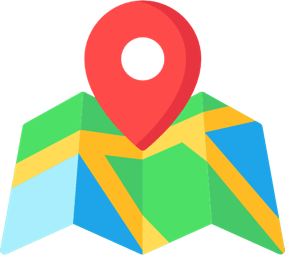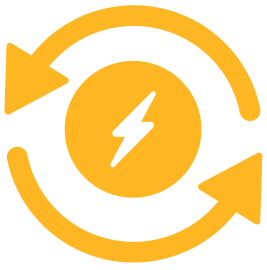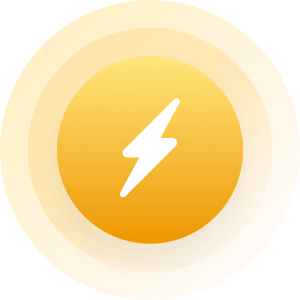| Topic: Tech question for geeks and nerds.. | |
|---|---|
|
I have a .dll file I cannot get rid of.
 Symantec deems it a threat, but I can't delete it, move it, or rename it. It does not show up in DOS so I can't delete it there. Any suggestions? Symantec deems it a threat, but I can't delete it, move it, or rename it. It does not show up in DOS so I can't delete it there. Any suggestions?
|
|
|
|
|
|
Has happened to me... don't know why it is, though. Good luck.
|
|
|
|
|
|
If you are certain you can flat out remove the file without breaking anything else, use a LiveCD like knoppix.
a) note the path and name of the file b) DL and burn the LiveCD c) if needed, set your bios to boot from CD d) reboot with CD in the drive d) from within the LiveCD OS, find your file & delete |
|
|
|
|
|
I'm assuming I can do a google for LiveCD. I appreciate the help greatly. Thank you.
|
|
|
|
|
|
please post the name of the dll file itself and i will give you the removal instructions ok?
if for some reason you deem that i do not respond to your response in an expedient time, then just email me via this system and i will respond here, with the resolution :) cheers! |
|
|
|
|
|
the reason that i asked for the name of the dll is that some virus scanning software will incorrectly identify a library link file (dll) as a dangerous executable and or system file which in some cases is simply not the way it is...
if i know the name of the file itself i can tell you whether it even needs to be removed, and/or whether or not some other adware, or spyware application is spoofing it to get you to remove it, as it is an inhibitor to the spyware or adware - which is what usually occurs when people inadvertently attempt to remove a dll which is designed to protect your operating system :) |
|
|
|
|
|
as already said be sure that it IS a virus & not symantec falsly recognising it as a virus (which wont suprise me!)
If you are sure, then your best would be to google it 1st, chances are its a worm & even if u delete the .dll ..it will prob already have cloned its self so upon the next reboot it will be sitting in the same place. Usually you would need to go in safe-mode at the least to try remove it. But a simple delete wont do it. You *might* have to edit the registry (if your not familiar with the registry DONT do it manually, you will screw windows up) use a prog which will scan/clean it for you. g/luck :-) |
|
|
|
|
|
Just make sure that it is a virus first. A good way to find out is to google the file name and extention. You can also find instructions on how to remove said file when and if you find that it is truely a virus.
|
|
|
|
|
|
What's the name of the file?
|
|
|
|
|
|
*Massagetrade is right. You can use any linux live disc to boot up your system. Once you do, Linux can access all of your windows files and you can delete any of them that you want. (This works also because these are not any presently running windows processes.)
|
|
|
|
|
|
Ok, firstly do not boot a Live CD (any distro) and delete the file! This can cause errors, such as the inability to run ANY .exe files. This happens because of the way malware embeds itself in your system, it can associate the .DLL file to be ran with any executable, or Windows Explorer etc etc.
You need to identify the piece of malware installed on your machine, and find a removal tool from the likes of Symantec or F-Secure. I'm sure if you post the name of the malware, someone will post a link to a removal tool pretty quickly. Ta, ~C |
|
|
|
|
|
omg ok for all you tard that know nothing about THE STUPID **** YOU THINK YOU KNOW FOR ONE DLL MEANS DYNAMICKALY LOADED LIBRARY < DONT GIVE A **** IF ITS SPELLED WRONG NEATHER BUT GO TO START THEN SEARCH LOOK FOR THE NAME OF IT SET TO DESKTOP REMOVE IF IT DONT REMOVE THEN UR COMPUTER IS A RETARD JUST LIKE YOU ITS NOT MATH IT A MOUSE DELETE DELETE DELETE
|
|
|
|
|
|
O AND FOR ALL THAT VIRUS SOFWARE YOU RETARDS BE USIND YEA I PROGRAM SOME **** LIKE IT ALL USER 32 GOOGLE IT FIND OUT WHAT IT MEANS DO WE KNOW WHAT A SYSTEM REGISTERY IS OR WHAT DOS MEANS NO NOT DENIEL OF SERVICE NEATHER SYSTEM 32 IS YOUR WINDOWS FOLDER WERE UR MAIN FYLES ARE KEEP USER 32 ALOWS IT TO BE READ BY THE CREATER OR THE SOFWARE WE CALL THAT SPYWEARE YEA THATS RIGHT YOU TARD ARE PAYING TO HAVE UR **** ****ED WITH AND CREDIT CARD NUMBERS ANNY ANNY THING ELSE US HACKERS CAN STEAL FROM STOOPID TARDS LIKE URSELF HAVE FUN!!!!!!!!!!!!!!!!!!!!!
|
|
|
|
|
|
Hey sp1d3r!
Firstly please stop S H O U T I N G! Secondly, I'm sure many of us are aware what a DLL file is, you right it's a dynamic link library. It is a binary file wrapper, that contains (most often) functions from the Win32 API. They are used so that a developer can abstract commonly used functions into a file and share that file. Thirdly, its not call the system registry, just the registry. Fourth, What the hell has DDoS got to do with anything? Fifth, the system 32 folder store very little (if any) personal information, that is normally stored in the hidden fold Application Data, or some other path under a users own directory, or in the registry. Sixth, You say "US HACKERS", I'm sorry, but I find it hard to believe you could hack you way out of a wet paper bag. I've not met a single white/black hat in my life without a good command of the English language and basic netiquette, for one, as I'm sure your aware, its needed for the great deal of social engineering a hacker will have to carry out. Please don't belittle people on public forums, its not nice, its just people asking for advice, and if you have nothing constructive to bring (which you don't), please don't bother. Have a nice day. |
|
|
|
|
|
get'em Chris
  
Fisitman from dos/command prompt: Then you should be able to see the file and delete. Just be sure you want to delete it first. attrib -h -s <filename> Displays or changes file attributes. ATTRIB [+R | -R] [+A | -A ] [+S | -S] [+H | -H] [drive:][path][filename] [/S [/D]] + Sets an attribute. - Clears an attribute. R Read-only file attribute. A Archive file attribute. S System file attribute. H Hidden file attribute. [drive:][path][filename] Specifies a file or files for attrib to process. /S Processes matching files in the current folder and all subfolders. /D Processes folders as well. |
|
|
|
|
|
What operating system? dll file name? did you do a manual scan or did virus detection software use a pop up to inform you..
Don't just start deleteing files without knowing what it's there for.. What kind of threat did the software say it was? Did the software Quarantine the file or try to? What software are you using? Help us help you. |
|
|
|
|















